Elevate your crispy fried dishes with this rich, creamy, and umami-packed Japanese Tartar Sauce! Unlike the tartar sauce commonly found in Western cuisine, which gets its tang from dill pickles and mustard, Japanese tartar sauce has a creamier texture thanks to finely chopped boiled eggs and a hint of sweetness from Japanese mayonnaise.
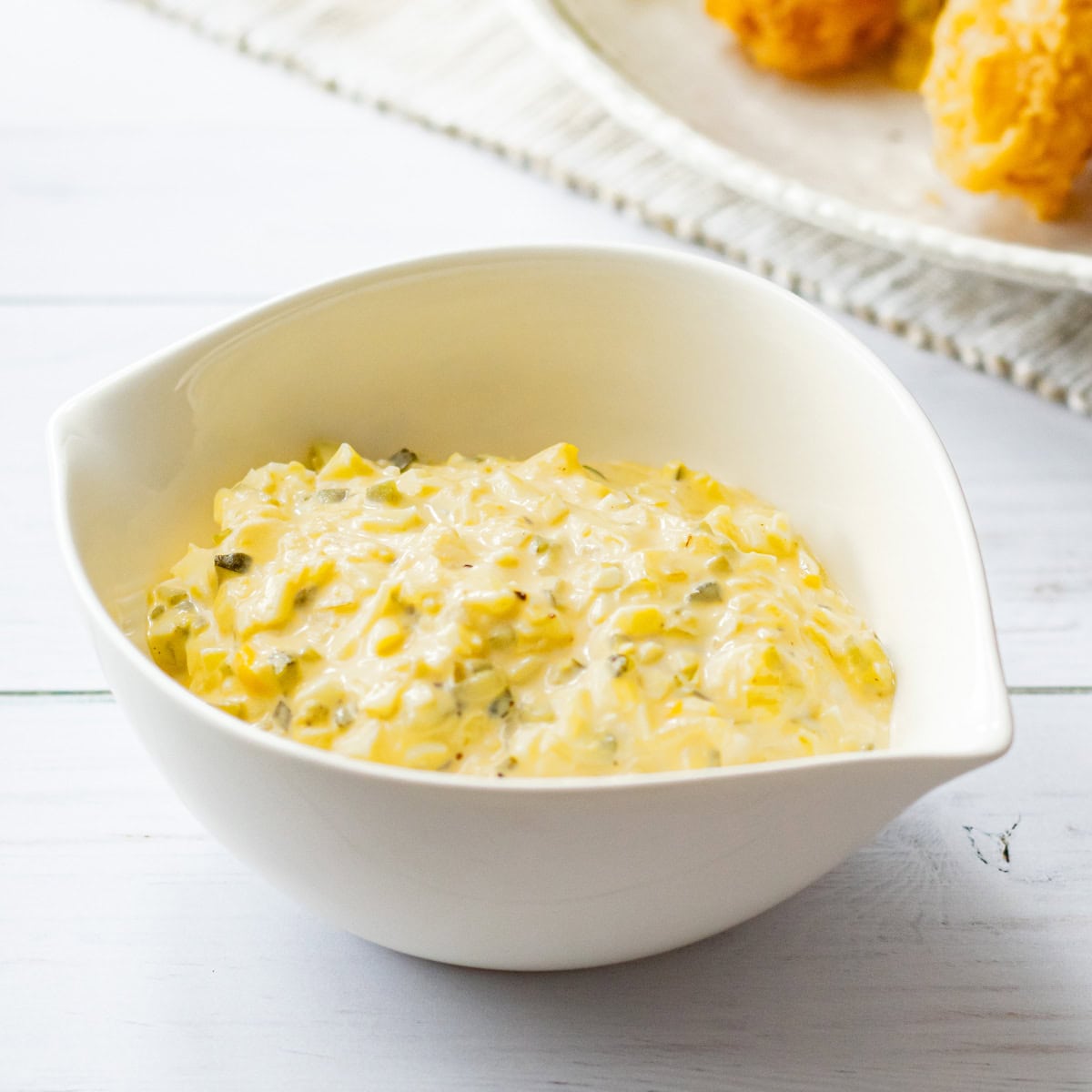
Jump to:
What is Japanese Tartar Sauce?
Japanese Tartar Sauce is a condiment made by combining Japanese mayonnaise with finely chopped boiled eggs, onions, pickles, and other ingredients. A key feature is the use of Japanese mayonnaise and boiled eggs, which gives it a richer flavor than Western-style tartar sauce. When paired with fried foods, it balances their saltiness while adding depth and enhancing the overall flavor.
One unique aspect of this condiment is its versatility in Japanese-style adaptations. Instead of pickles, you can use ingredients like shibazuke (pickled vegetables with red perilla leaves), rakkyo (pickled scallions), or takuan (pickled daikon radish). This recipe uses pickles, a common ingredient, but if you are interested, try substituting them with one of these alternatives. You will enjoy a unique fusion of Japanese tartar sauce and traditional Japanese ingredients, creating a new taste experience.
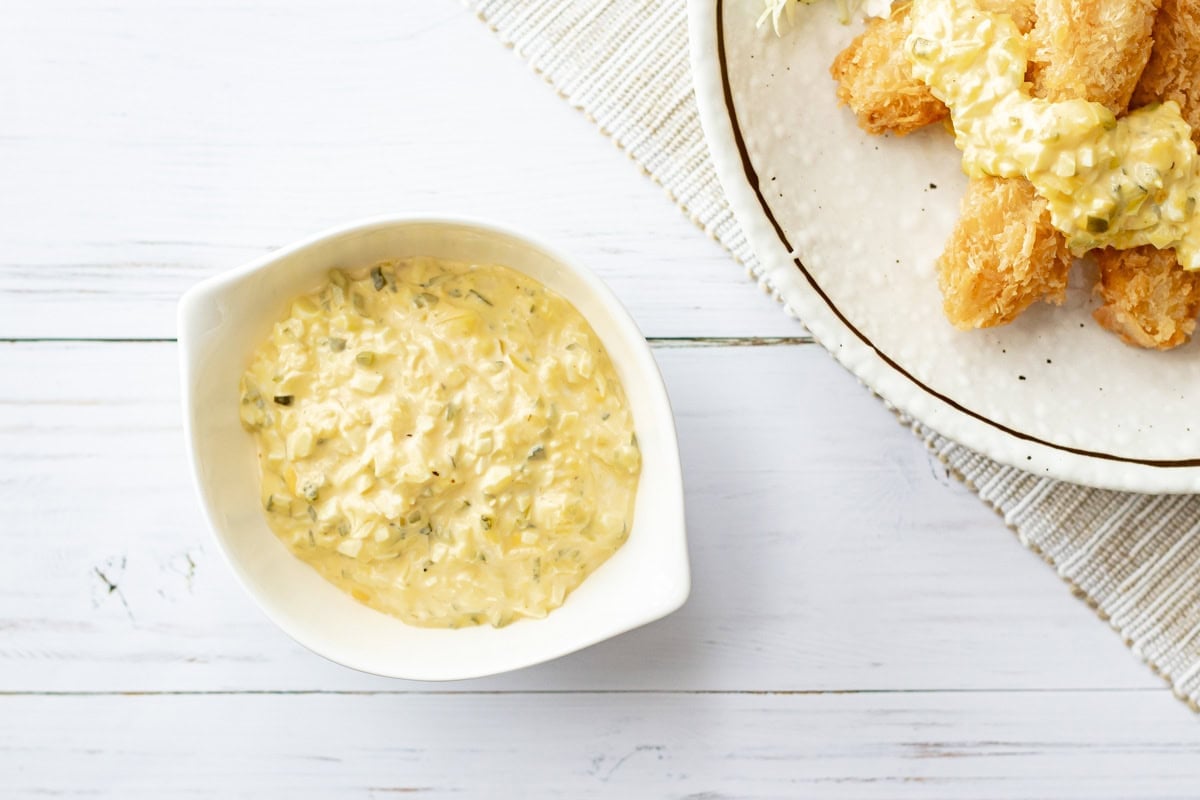
Why Japanese mayonnaise matters
Japanese tartar sauce is typically made with Japanese mayonnaise.
Most Japanese mayonnaise is made with egg yolks instead of whole eggs and contains a mild vinegar, such as rice vinegar. This gives it a creamy texture and a mellow, slightly sweet flavor.
This distinctive characteristic is one of the key factors that define the taste of Japanese tartar sauce. That’s why, when making Japanese tartar sauce, it is important to use Japanese mayonnaise or a similar alternative. Among store-bought brands, Kewpie Mayo is the most well-known option. Alternatively, you can make your own by following my Japanese Mayonnaise recipe.
If you use regular mayonnaise, the flavor of the tartar sauce may turn out quite different from what I intended. Be especially careful not to use mayonnaise with a strong, sharp acidity, as it can overpower the delicate flavor.
Why hard-boiled eggs are best for Japanese tartar sauce
Boiled eggs are another essential ingredient in Japanese tartar sauce.
Adding boiled eggs creates a rich, umami-packed flavor. When it comes to boiled eggs, people have different preferences for hard-boiled versus soft-boiled, but for this condiment, hard-boiled eggs are typically used. There are two main reasons for this choice.
The first reason is that hard-boiled eggs help tartar sauce stay fresh longer. Tartar sauce made with soft-boiled eggs should be eaten on the same day, whereas tartar sauce made with hard-boiled eggs can last up to three days.
The second reason is that the moisture in soft-boiled eggs can make the tartar sauce runny. A key tip for making delicious tartar sauce is to remove as much excess moisture as possible from the ingredients to prevent it from becoming watery. Since soft-boiled eggs have runny yolks, they don’t work well in tartar sauce.
For these reasons, hard-boiled eggs are the best choice for Japanese tartar sauce. As a side note, you can make hard-boiled eggs by boiling them for at least 12 minutes.
Serving suggestions
Once you have made Japanese tartar sauce, it is time to enjoy it with a variety of dishes. In Japan, it is typically served with the following:
- Ebi fry (fried shrimp)
- Kaki fry (fried oysters)
- Fried white fish
- Chicken Nanban (fried chicken with vinegar and tartar sauce)
Of course, you are not limited to just these options. It also pairs well with many other fried foods—or even non-fried dishes. There are plenty of great combinations waiting to be discovered, so try it in different ways and find your favorite!
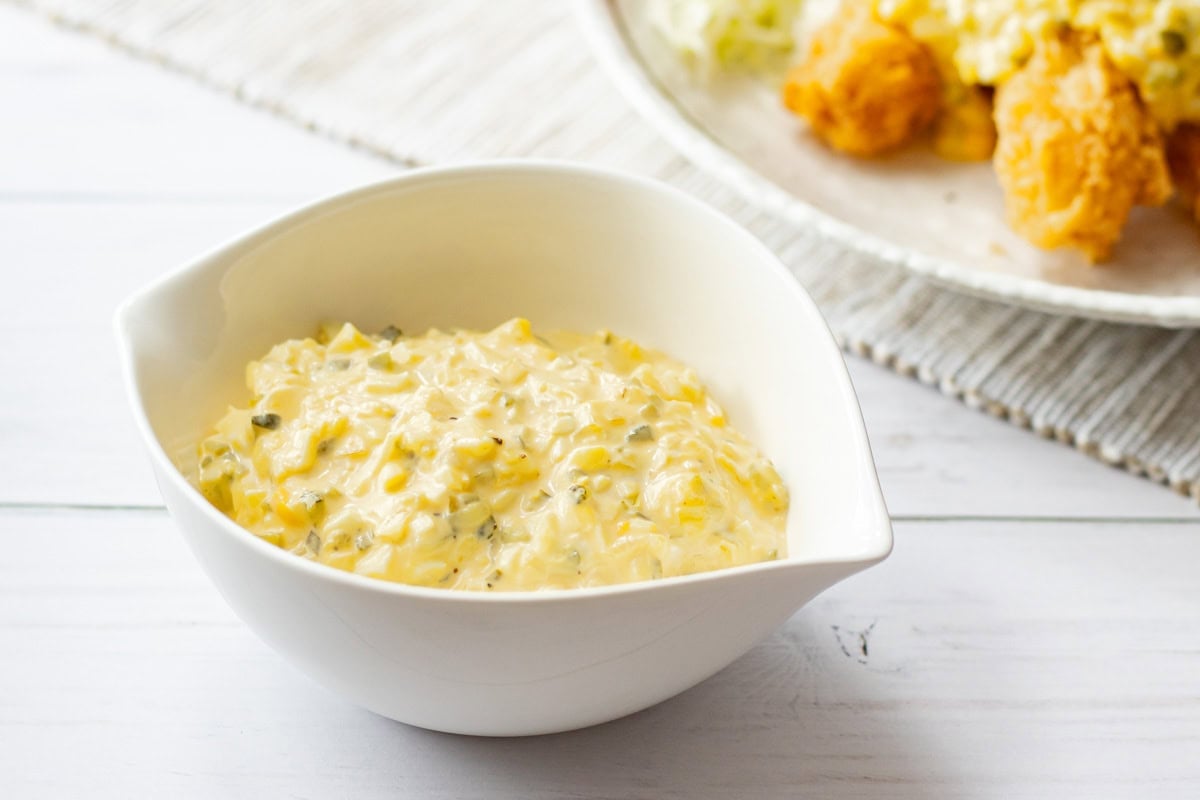
📋Step-by-step recipe
Ingredients
- 2 large eggs (about 2.1 oz/60 g each, including shell)
- ¼ onion (about 1.8 oz/50 g)
- 0.9 oz pickles (gherkins) (You can also use shibazuke (pickled vegetables with red perilla leaves), rakkyo (pickled scallions), or takuan (pickled daikon radish) for a Japanese twist.)
- 4 Tbsp Japanese mayonnaise (such as Kewpie Mayo, 0.53 oz/15 g per 1 Tbsp. For a homemade version, please refer to the linked article.)
- ½ Tbsp lemon juice
- ½ tsp sugar
- ¼ tsp salt
- pinch of ground black pepper
Instructions
🕒 Total: 25 mins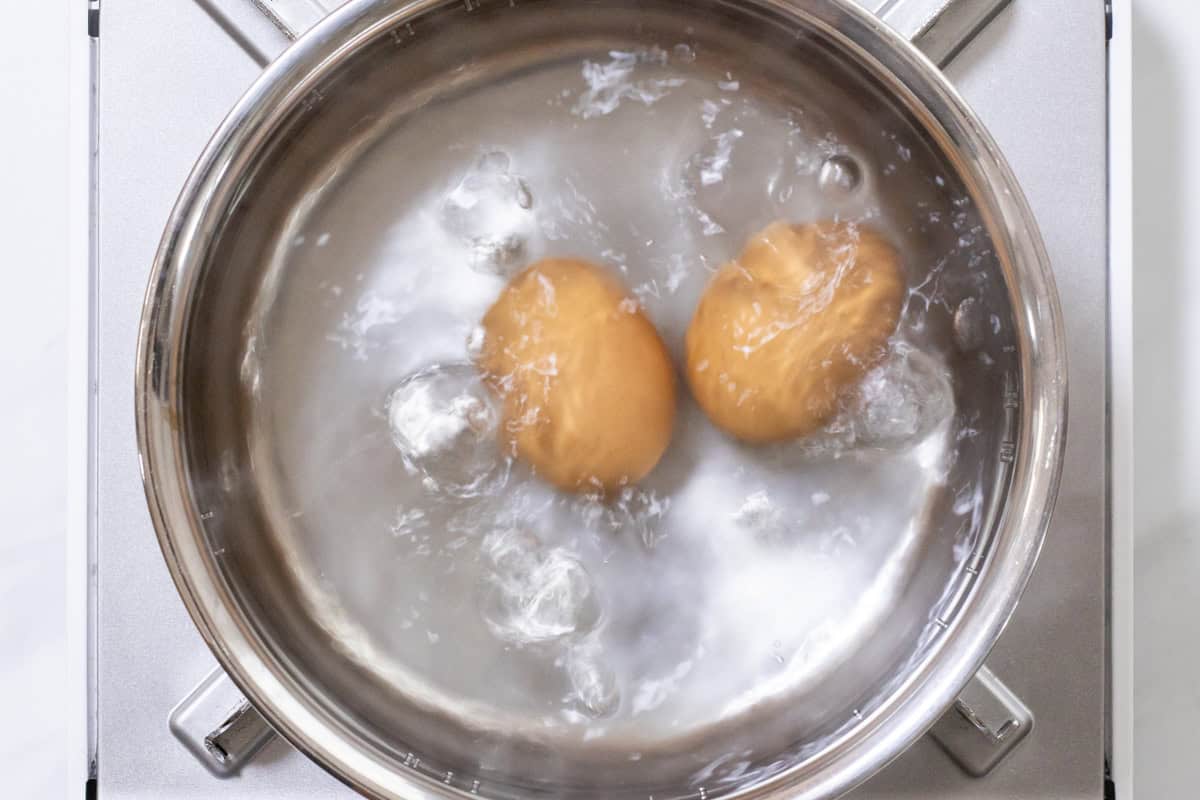
Step 1
Fill a large pot with plenty of water and bring it to a boil. Once boiling, reduce the heat to medium and carefully lower the eggs into the water using a slotted spoon or ladle. Let them cook for at least 12 minutes.
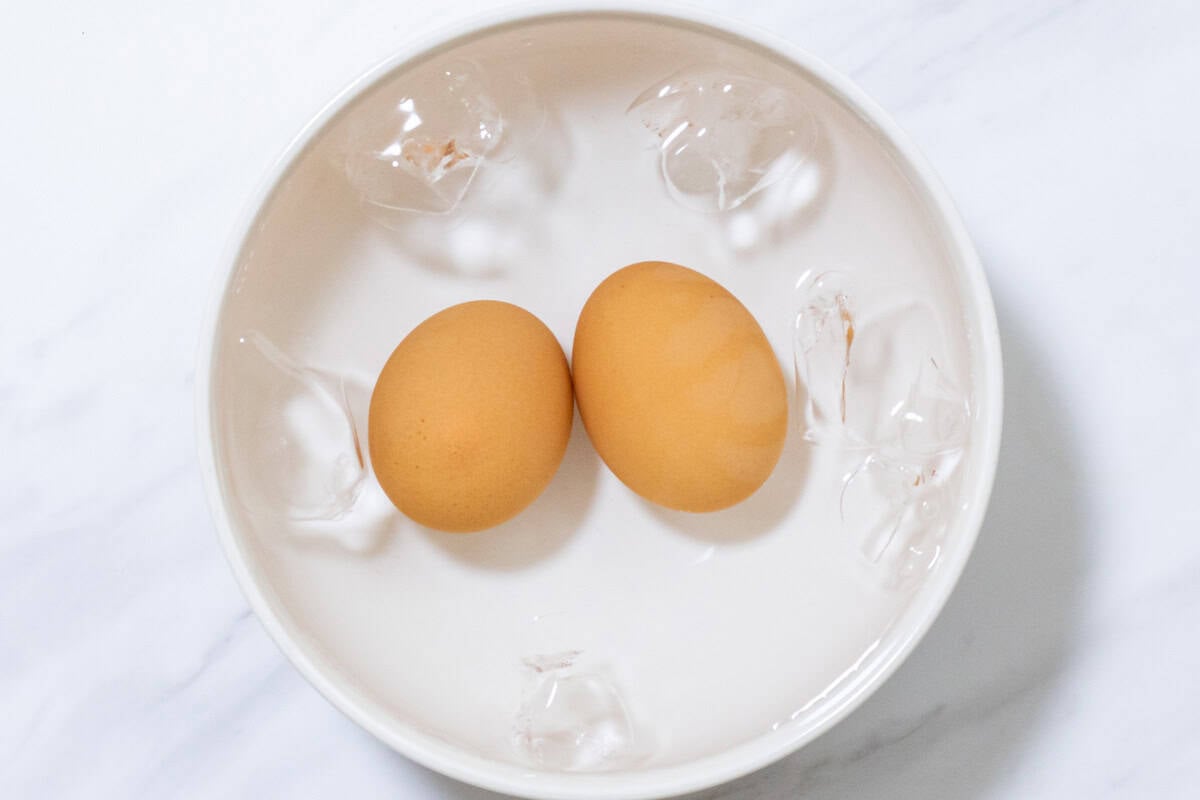
Step 2
After cooking, cool the eggs in ice water or under running water. Then, peel off the shells and gently pat them dry with a paper towel.
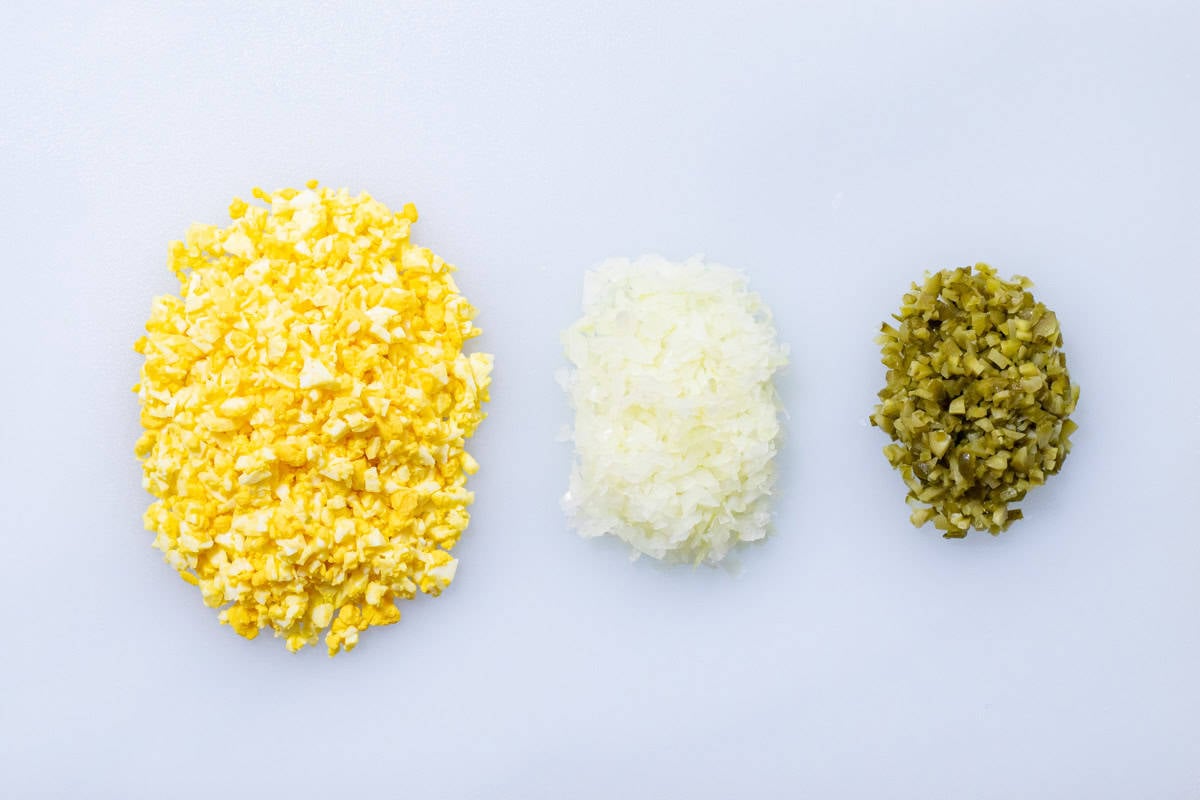
Step 3
Finely chop the eggs, onion, and pickles. After chopping the onion, wrap it in paper towels and squeeze firmly to remove any excess moisture.
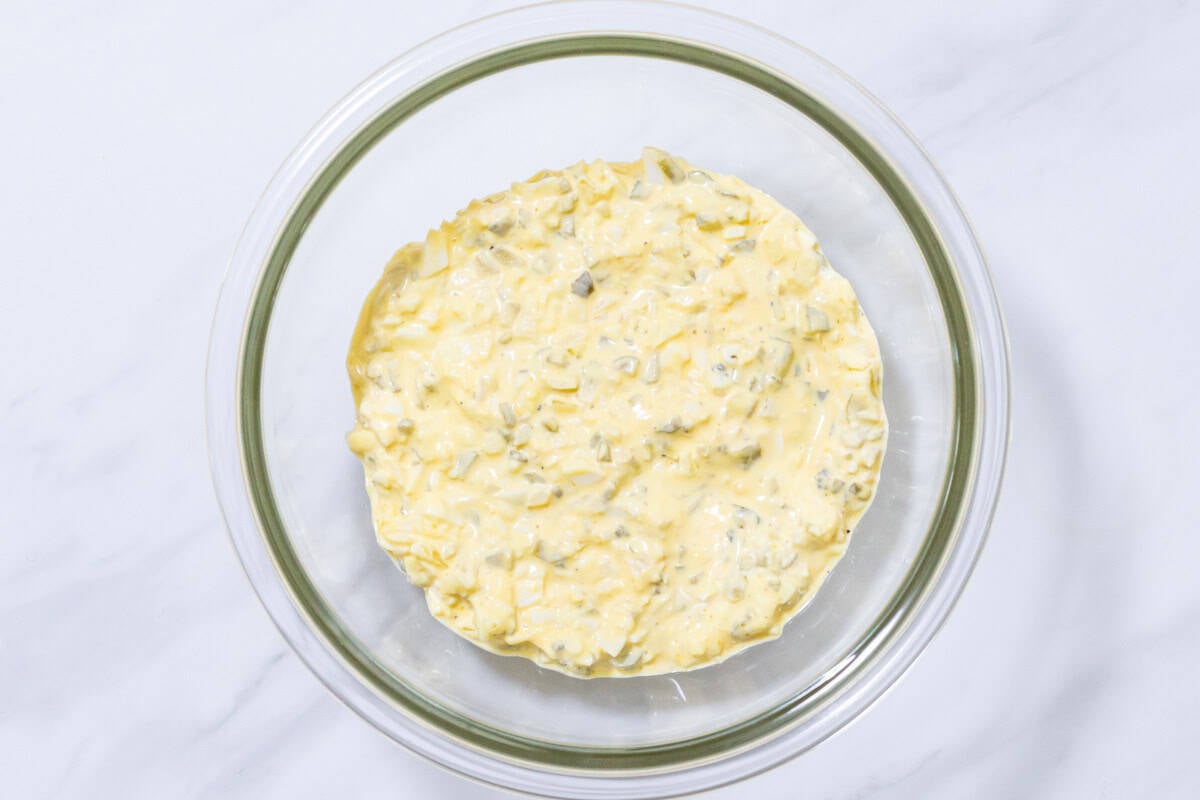
Step 4
Put the eggs, onion, and pickles in a bowl, then add Japanese mayonnaise, lemon juice, sugar, salt, and pepper. Mix everything thoroughly.
To store
You can store it in the refrigerator for up to 3 days.
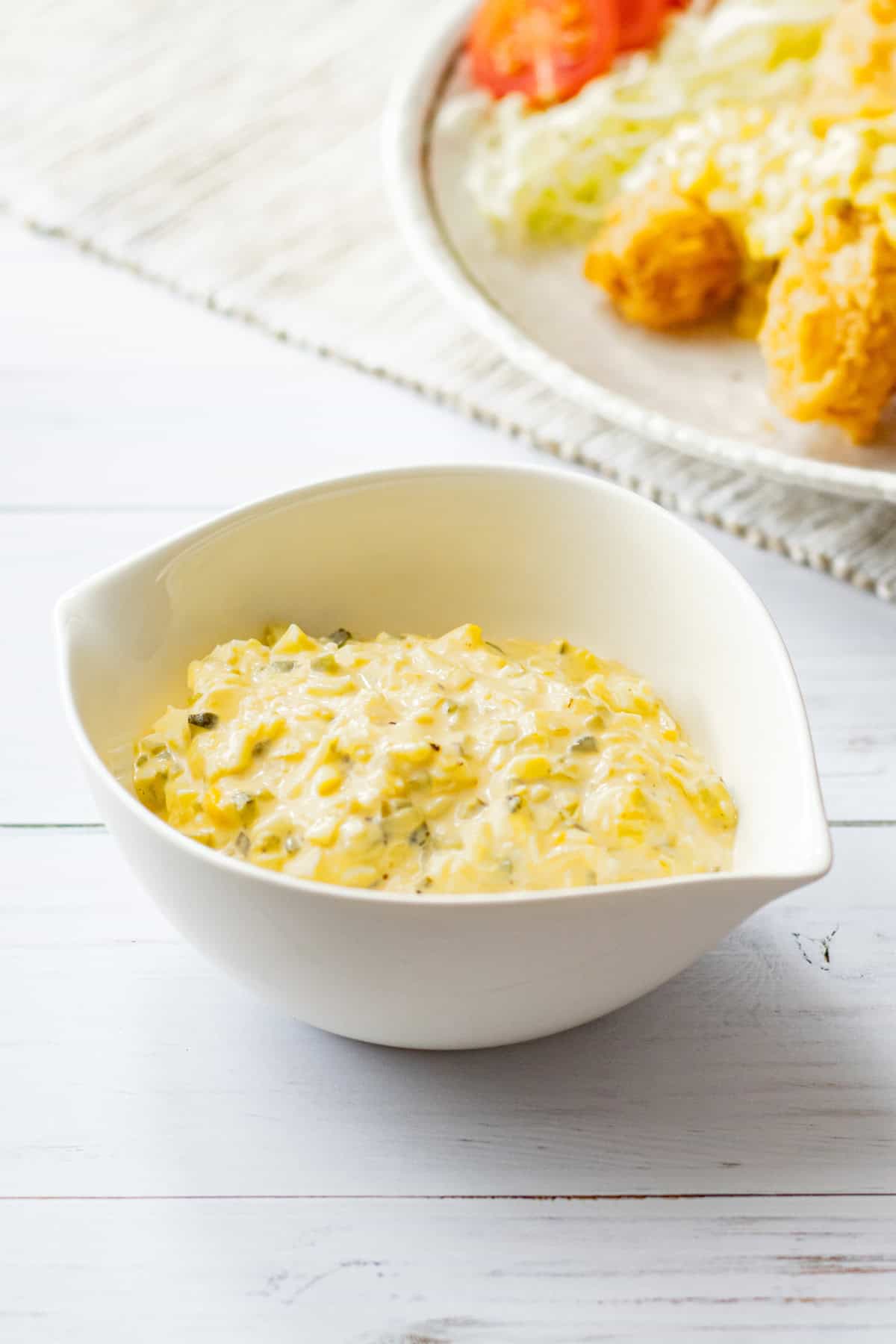
If you try this recipe, I’d love to hear what you think. Please consider leaving a review and star rating in the comments below. If you enjoyed it, I’d really appreciate it if you shared it with your friends.
More Japanese sauce recipes
Recipe card

Japanese Tartar Sauce
Ingredients
- 2 large eggs (about 2.1 oz/60 g each, including shell)
- ¼ onion (about 1.8 oz/50 g)
- 0.9 oz pickles (gherkins) (You can also use shibazuke (pickled vegetables with red perilla leaves), rakkyo (pickled scallions), or takuan (pickled daikon radish) for a Japanese twist.)
- 4 Tbsp Japanese mayonnaise (such as Kewpie Mayo, 0.53 oz/15 g per 1 Tbsp. For a homemade version, please refer to the linked article.)
- ½ Tbsp lemon juice
- ½ tsp sugar
- ¼ tsp salt
- pinch of ground black pepper
Instructions
- Fill a large pot with plenty of water and bring it to a boil. Once boiling, reduce the heat to medium and carefully lower the eggs into the water using a slotted spoon or ladle. Let them cook for at least 12 minutes.
- After cooking, cool the eggs in ice water or under running water. Then, peel off the shells and gently pat them dry with a paper towel.
- Finely chop the eggs, onion, and pickles. After chopping the onion, wrap it in paper towels and squeeze firmly to remove any excess moisture.
- Put the eggs, onion, and pickles in a bowl, then add Japanese mayonnaise, lemon juice, sugar, salt, and pepper. Mix everything thoroughly.
Notes
- You can store it in the refrigerator for up to 3 days.

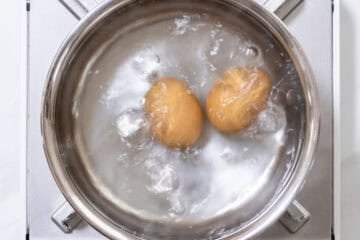
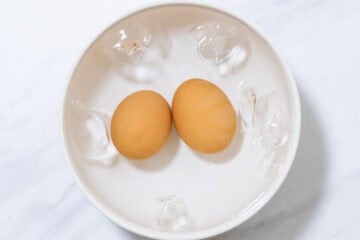
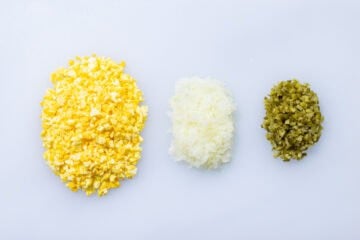
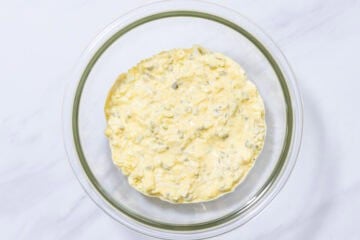


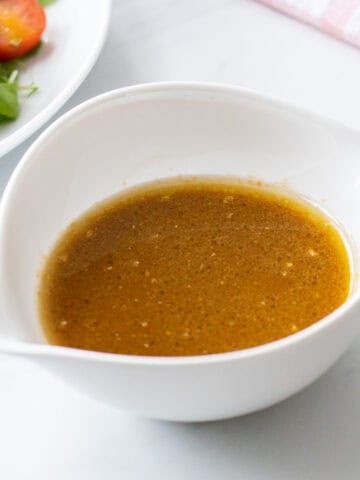
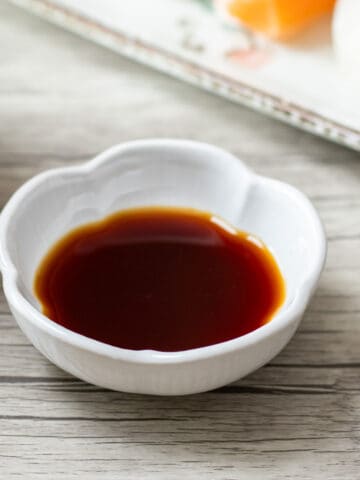
Leave a Rating and a Comment